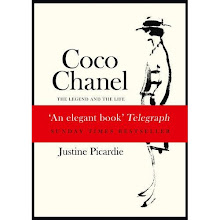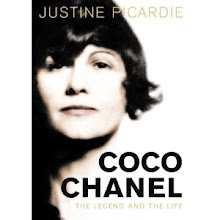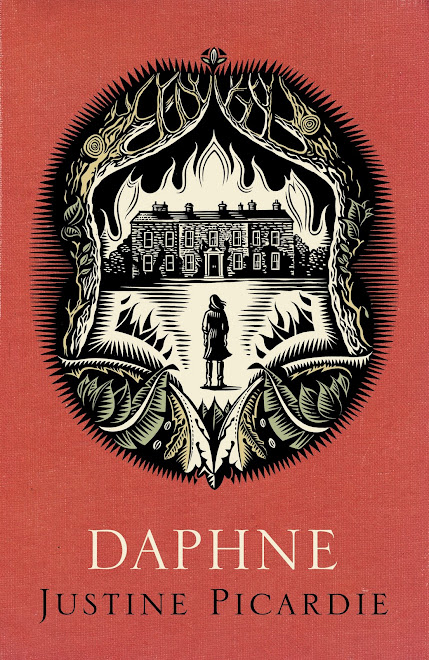

Here is last Sunday's Closet Thinker (or read it below, with links), and today's column, as well. (The illustrations are by the wonderful Mio Matsumoto, whose drawings illuminate the Closet Thinker every week in Stella). Meanwhile, I've been eating hot porridge for breakfast (it's so cold in the mornings) and almond mini magnums at night (why does a choc ice straight out of the freezer seem so appealing after dinner, even in January?). No answer yet to this conundrum, but it seems to be working for me as an antidote to the low skies; speaking of which, there is an unexpected hint of potential snow in the London sky this morning (although on Friday, there was a violent burst of hail instead.)
Now, just off to make my porridge...
22 January:
Once upon a time, the beau monde escaped the misery of January aboard their private yachts, and doubtless some still do, but for the majority of fashion consumers, the cruise (also known in the US as resort) collections have come to mean something different. Often the most profitable of seasons, and frequently more wearable than catwalk extravaganzas designed for supermodels rather than real women, cruise fills the gap between the autumn/winter collections (available since the dog-days of late summer) and the spring/summer lines (due to arrive next month, when the weather will still be miserable).
Not that resort lines are the sole preserve of luxury brands; H&M launched its Versace cruise collection three days ago, with silk dresses and bikinis in strawberry and butterfly prints, alongside matching bags, earrings and charm bracelets. I didn’t particularly like the much-publicised first collaboration between Versace and H&M – although apparently I’m in a minority of one, given the speed with which it sold out – but this new one looks sweetly appealing (and hopefully the quality of the fabric will have improved since last time).
Alternatively, you could interpret cruise in a more literal, nautical sense, given the predominance of oceanic motifs in the spring 2012 collections: starfish at Yves Saint Laurent and Versace, shark-tooth medallions at Givenchy, tropical aquatic prints at Peter Pilotto and Mary Katrantzou, and an entire Chanel show based around a fantastical seascape, complete with conch-shell clutches and Florence Welch as a mermaid emerging from a giant clam, singing ‘What the Water Gave Me’.
Sceptics, cynics and sufferers from Seasonal Affective Disorder may by now be muttering in disbelief about the implausibility of catwalk scuba ensembles (as seen at Peter Pilotto) set against a background of economic catastrophe. But history reveals that this is not the first occasion in which high style has collided with a surreal view of how to dress in a crisis. During the First World War, the artist Paul Iribe (who subsequently became Coco Chanel’s fiancée) transported wounded soldiers to Paris from the Front Line whilst dressed as a deep-sea diver, for reasons that have never become clear. At his side were Misia Sert (the reigning muse of modernism) and another leading exponent of the avant-garde, Jean Cocteau; both of them dressed in nurses’ uniforms designed by the couturier Paul Poiret, who had also donated his delivery vans as ambulances. Unfortunately, Poiret was thereafter bankrupted; suggesting, perhaps, that if absurdist fashion is a fishy business, it is nevertheless occasionally capable of making waves, even while so far out as to be drowning…
29 January.
It is a convention of fashion (and yes, this is a business as prone to conformism as any other, despite protestations to the contrary) that one is either a wearer of spots or stripes, but not both. If polka dots are supposedly for the girlish, then stripes are for those of a more gamine look; as embodied by Jean Seberg sporting a sailor’s top, in contrast to the young Bridget Bardot in a pink spotted bikini. But there is also the Third Way, currently very much in evidence, kick-started by Dolce & Gabbana’s star print dresses in the winter 2011 collection, and still in a beguiling variety of forms (my favourite a starry cashmere sweater from Chinti and Parker at net-a-porter).
The timing of a resurgence of starry motifs is intriguing, given the concurrent economic gloom, which some commentators are now referring to as a Great Recession, echoing the long slump in the wake of the Wall Street Crash. If previous decades – the Roaring Twenties and the big-spending Noughties – allowed themselves to play with the idea of stripped-down fashion (the Little Black Dress; luxe minimalism), then the aesthetic of 2012 has some parallels with that of 1932. Nowhere is this more evident than in fashion’s latest employment of diamond stars, as if to remind us that even in a Depression, a few essential elements remain fixed points of navigation, and potentially safer investments than risky stock markets.
Hardly a coincidence, then, that Chanel’s 2012 Cruise collection revived the star-strewn jewellery designs from Coco Chanel’s diamond show, originally staged eighty years ago. Princesses and celebrities alike came to the opening party in 1932, to see Mademoiselle Chanel’s radiant, astronomical jewels; a sparkling treasure trove that formed a curious juxtaposition with a hardening winter, when increasing numbers of unemployed were homeless on the streets of Paris.
To Chanel, however, it made perfect sense: she declared that her glittering constellation of stars was the only way forward ‘during a period of financial crisis when an instinctive desire for authenticity is reawakened in every domain’. This pronouncement might seem dangerously close to Marie Antoinette, but as it happened, Chanel was proved right, at least in terms of the markets: two days after her diamond show opened, De Beers stock jumped 20 points on the London exchange.
It is always a dangerous game to make predictions, in fashion as in the wider economy; but still, I’d hazard a guess that however terrifying the coming bust, diamond stars by the luxury brands will sell even better than they did in the boom years.









